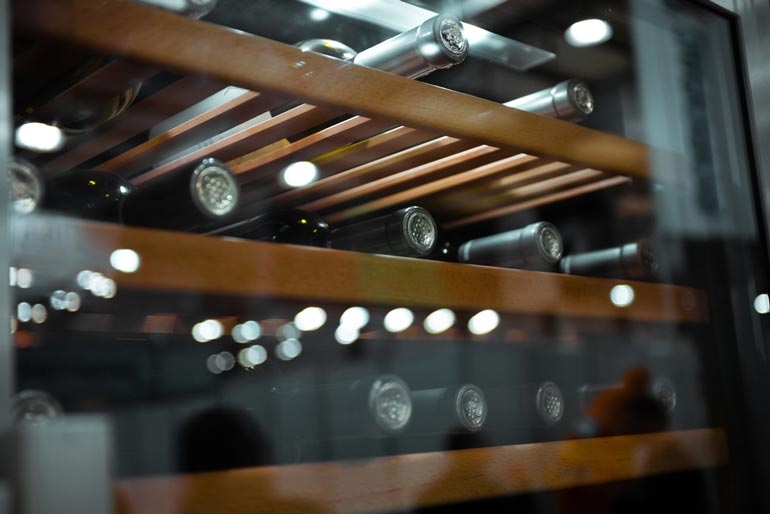Start 14-Day Trial Subscription
*No credit card required

Wine Coolers Vs Wine Refrigerators
Discover the ultimate showdown between wine coolers and wine refrigerators. Which one will keep your wine at the perfect temperature? Click to find out!
If you're reading this, you're probably puzzled by the terminology in the world of wine cooling. What's the difference between a wine fridge, wine cooler and wine refrigerator?
Well, the short answer is this: there is no difference! Nowadays, these terms are used interchangeably. A few years ago, some companies attempted to establish guidelines, using 'wine cooler' for smaller appliances and 'wine fridge' or 'wine refrigerator' for larger ones, as illustrated in this post: winerooster.com/best-wine-fridges/.
However, that distinction is no longer applicable. So, you can't rely on these terms to provide insights into the unit you're considering purchasing. In fact, many manufacturers now include all three terms in the names of their appliances. The same applies to built-in wine coolers & under counter wine fridges. There is no difference between the two.
Nonetheless, let's explore what used to be the so-called difference between them, even if it's considered archaic now.
Difference in Size and Capacity
Wine coolers are generally smaller in size and have a limited capacity to store wines compared to wine refrigerators. Wine coolers are designed to hold a smaller number of wine bottles, usually ranging from 6 to 30, depending on the model. This makes them ideal for individuals or households with a smaller wine collection or limited space.
Wine refrigerators are larger and can accommodate a greater number of wine bottles, typically ranging from 30 to 100 or more. These refrigerators are more suitable for wine enthusiasts or those with a larger collection. A wine fridge can store all types of wine – red wines, white wines and other beverages such as beer.
Difference in the Cooling Technology
To understand the difference in the cooling technology between wine coolers and wine refrigerators, you'll need to consider their specific features and functionalities.
Wine coolers typically use a thermoelectric cooling system. This technology relies on the Peltier effect, which uses an electric current to transfer heat from one side of the wine cooler to the other. The cool side maintains a lower temperature, allowing the wine to be chilled.
On the other hand, wine refrigerators use a compressor-based cooling system. This technology works by compressing a refrigerant gas, which then cools down and expands, absorbing heat from the wine. The cooled gas is then circulated through the refrigerator to maintain a consistent temperature.
While both cooling technologies are effective, wine refrigerators with compressor-based systems are generally more powerful and can maintain lower temperatures for longer periods of time.
Difference in Price
When it comes to price, wine coolers are generally more affordable than wine refrigerators. Wine coolers are available in a wide range of prices, starting from as low as $100 and going up to around $1000, depending on the size, features and brand.
Wine fridges tend to be more expensive, with prices ranging from around $300 to over $3000. The cost of wine refrigerators is often higher due to their advanced cooling technology, larger storage capacity, and additional features like dual temperature zones and humidity control.
However, it's important to consider your specific needs and budget to determine which wine cooler option is the best fit for you.
Difference in Installation
For proper installation of either a wine cooler or a wine refrigerator, you'll need to follow the manufacturer's instructions. These instructions are essential to ensure that your wine cooler functions correctly and maintains the optimal conditions for storing wine.
The installation process typically involves finding a suitable location for your wine fridge, ensuring proper ventilation, and connecting it to a power source. Wine coolers are often freestanding and can be placed in various areas of your home, such as the kitchen or dining room.
On the other hand, wine fridges are designed to be built-in and require professional installation to ensure a seamless integration into your cabinetry. It's crucial to carefully read and follow the manufacturer's guidelines to avoid any potential issues and to get the most out of your wine storage appliance.
Conclusion
In the battle of wine fridge vs. wine cooler vs. wine refrigerator, there's only one winner—the wine that's being cooled. Jokes aside, though there used to be distinctions among these terms, that's no longer the case.
Manufacturers of wine coolers use all three terms for various types of wine fridges, so don't fixate on the specific term – they all refer to the same thing.



